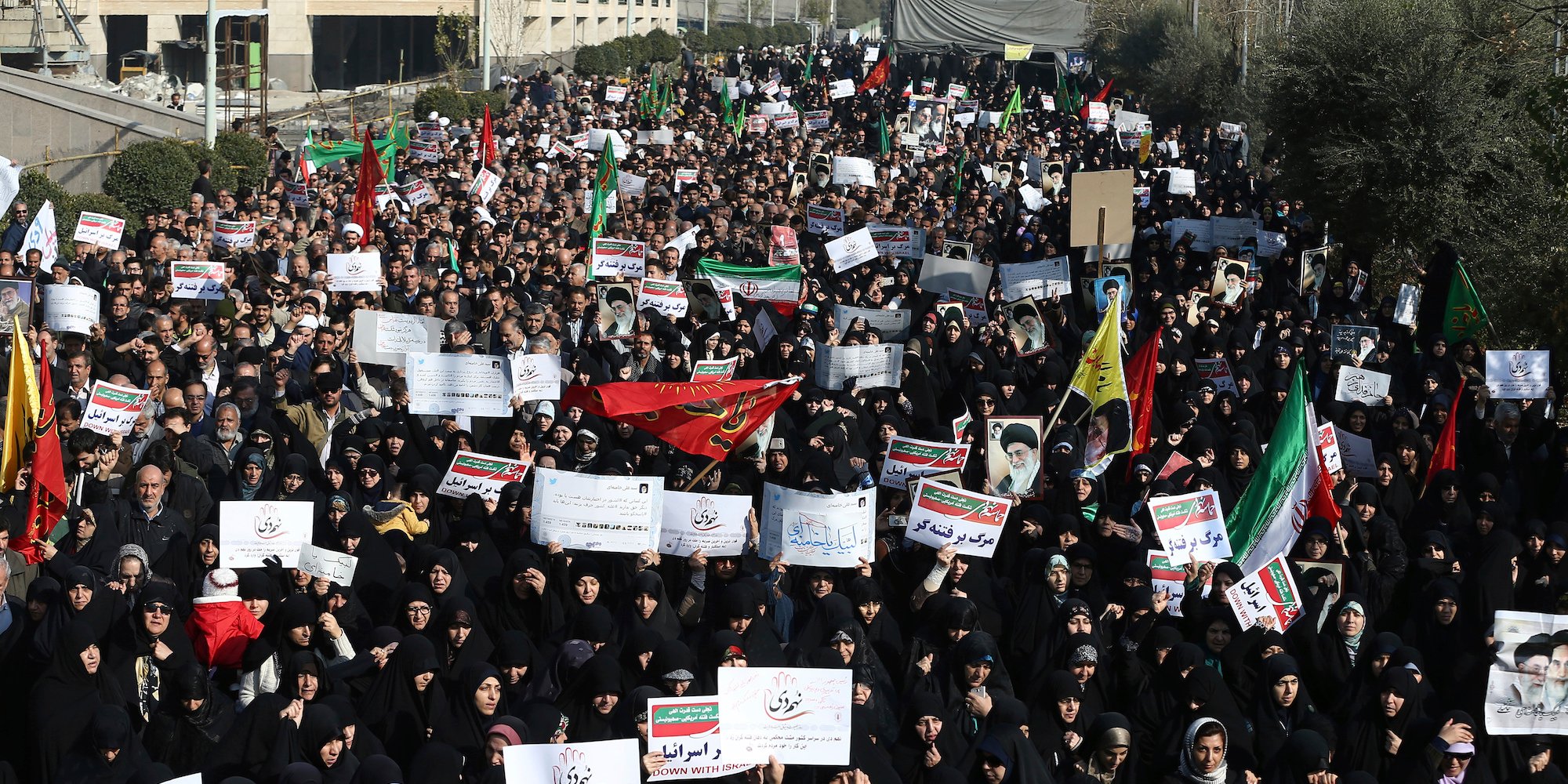BY DANIEL SAENZ
On December 28th, a rather small protest that in Mahshad, Iran, has erupted into a large-scale protest that is upsetting the political dynamic in Iran. What initially started as a protest against the sad state of the Iranian economy, has now evolved into a protest of the several military interventions of Iran, Hassan Rouhani who is the current president, and the religious laws that have governed Iranians for generations. These events are not happening in a bubble, rather, the grievances of Iranian citizens go back to 1979, a year that would set the dynamic of Iran as we know it.
The 1979 Islamic Revolution ousted the previous government that was ruled by Mohammad Reza Pahlavi or the Shah of Iran. People in Iran were quite aware of the fact that the Shah ruled with an iron fist. Political dissidents were often kidnapped, jailed, and tortured. Amnesty International reported that the kingdom often used sleep deprivation and electric shock on prisoners, whipped them, and poured broken glass and boiling hot water into their rectums. Snakes were the favored torture method for women that opposed the Shah. Needless to say, this created a great deal of outrage and resentment towards the Shah amongst the Iranian populace.
Fed up with the tyrannical rule of the Shah, demonstrations against the government started to gain traction in 1977. These demonstrations neutralized the government in 1978. This would lead the Shah to eventually flee into exile by 1979. The government that was left in his absence invited exiled Islamic cleric, Ruhollah Khomeini, back to Iran. Khomeini would be the main rallying voice for the revolution thereafter until the rebels and militias finally overwhelmed the remaining forces loyal to the Shah.
Iran then proceeded to have a referendum over what type of government would rule. Iranians voted overwhelmingly to make Iran into a theocracy that would be governed by strict Islamic law. Following this referendum, Khomeini became the Ayatollah, or supreme ruler of Iran. Unfortunately, the revolution would prove to be an even larger step backward. Ayatollah Khomeini would prove to be even more totalitarian than the Shah. The Ayatollah would utilize the Shah’s intimidation tactics and pair them with a strict interpretation of Islamic law. Ayatollah Khomeini’s new vision for Iran would prove to be not just a domestic threat to the Iranian people, but also a security threat to neighboring countries as well as the United States.

This TMN story is brought to you by: Sip N’ Spin
Once Iran adopted Islamic law, the state began to crack down on individual liberties. Women are now forced to wear the Hijab out of fear of being arrested by the religious police. They can no longer leave the country without her husband’s approval. Religious minorities are heavily persecuted as they are second-class citizens under Islamic law. Being gay is illegal and will often lead to forced sex changes or being hung. Premarital sex is also illegal. In fact, Iran has even gone as far as hanging a 16-year-old girl from a crane for allegedly having sex with her boyfriend.
Economically, Iran is a bastion of corruption. Cronyism and nepotism run amok in the Iranian government as there is no proper distribution of wealth. Many of Iran’s funds go to enrich the clerics and government officials of Iran. Consequently, youth unemployment is at a staggering 40%.
Internationally, Iran is also currently a massive security threat for both the United States and allies within the region. The Iranian government has funded Islamist terrorist groups across the region to fight proxy wars against Iran’s enemies. By funding groups like Hezbollah and Hamas, Iran has been able to destabilize Lebanon and Palestine and effectively turn them into client states, which poses a security problem for Israel on its borders. By funding Al Qaeda, Iran has been able to fight the United States in Afghanistan without having to deploy a single troop. And until the recent Iran Nuclear Deal was signed in 2015, Iran was trying to build a nuclear warhead as a threat to the United States and its allies.
All of this may change, however, with this new wave of protests. People started out protesting the sorry state of the economy of the lack of employment opportunities for Iran’s youth. Protests then erupted calling for an end to the Iranian interventions in Palestine and Lebanon as these interventions have cost the government a great deal of money at the expense of the working class. Protests erupted over the mistreatment of women in Iran as women all over the country have been taking off the hijab in public. And now, people are fearlessly calling for the death of the Ayatollah.
These protests have caused a great deal of unrest within the country. People have taken over homes of government officials. The police in Tehran have already stated that they will not enforce Hijab laws. In response to all of this upheaval, the government has blocked social media, used tear gas on protesters, and has even killed a couple of demonstrators. And in an attempt to discredit the protests, the Ayatollah has attempted to blame the demonstrations on Israel, the United States, and Saudi Arabia. While it certainly remains to be seen as to whether or not the demonstrations will force a transition in the government, the United States should cheer on these protests because if there is a true reformation, the U.S. may have one less hostile power in the region to deal with.

